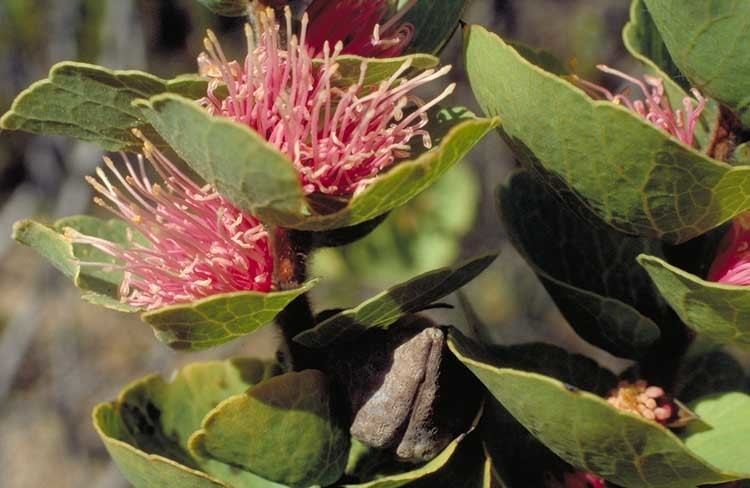Subfamily Grevilleoideae Rank Species | ||
 | ||
Similar Hakea pandanicarpa, Hakea cristata, Hakea corymbosa, Hakea bucculenta, Hakea macraeana | ||
Hakea cucullata, commonly known as hood-leaved hakea or scallop hakea, is a species of shrub in the family Proteaceae and is endemic to the south-west of Western Australia. It is an erect shrub with only a few branches and distinctive egg-shaped to almost round leaves which are cupped around the stem, flowers and fruits.
Contents
Description
Hakea cucullata is an erect shrub growing to a height of 1–4 metres (3–10 ft) with few branches. The young branches are densely covered with short hairs and the flowering stems have dark brown hairs. The leaves are 37–75 millimetres (1–3 in) long, 38–90 millimetres (1–4 in) wide, broad egg-shaped and often with wavy or finely toothed margins. The leaves are pale green in colour, more or less overlap and are distincively cupped around the stem, and in the flowering season cupped around the flowers and later the fruits.
The flowers are arranged in groups of 25 to 30 flowers in the axils of leaves on stalks 5.5–8 millimetres (0.2–0.3 in) long. The flowers are glabrous and deep pink in colour. Flowering mainly occurs from August to October and is followed by woody fruits which are 22–28 millimetres (0.9–1 in) long and 14–20 millimetres (0.6–0.8 in) wide.
Taxonomy and naming
Hakea cucullata was first described by Robert Brown in 1830 from a specimen collected by William Baxter in 1824 and the description was published in Supplementum primum Prodromi florae Novae Hollandiae. The specific epithet (cucullata) is a Latin word meaning "hooded".
Distribution and habitat
Hood-leaved hakea is found in the Stirling Range of Western Australia, south of there, and east to the Whoogarup Range in the Esperance Plains, Jarrah Forest and Warren biogeographic regions where it grows in gravelly soils.
Conservation
This species is classified as "not threatened" by the Western Australian Government Department of Parks and Wildlife.
Use in horticulture
Scallop hakea is reasonably hardy as a garden plant and has been grown successfully on Kangaroo Island. It is easily propagated from seed and has been successfully grafted onto Hakea salicifolia root stock.
